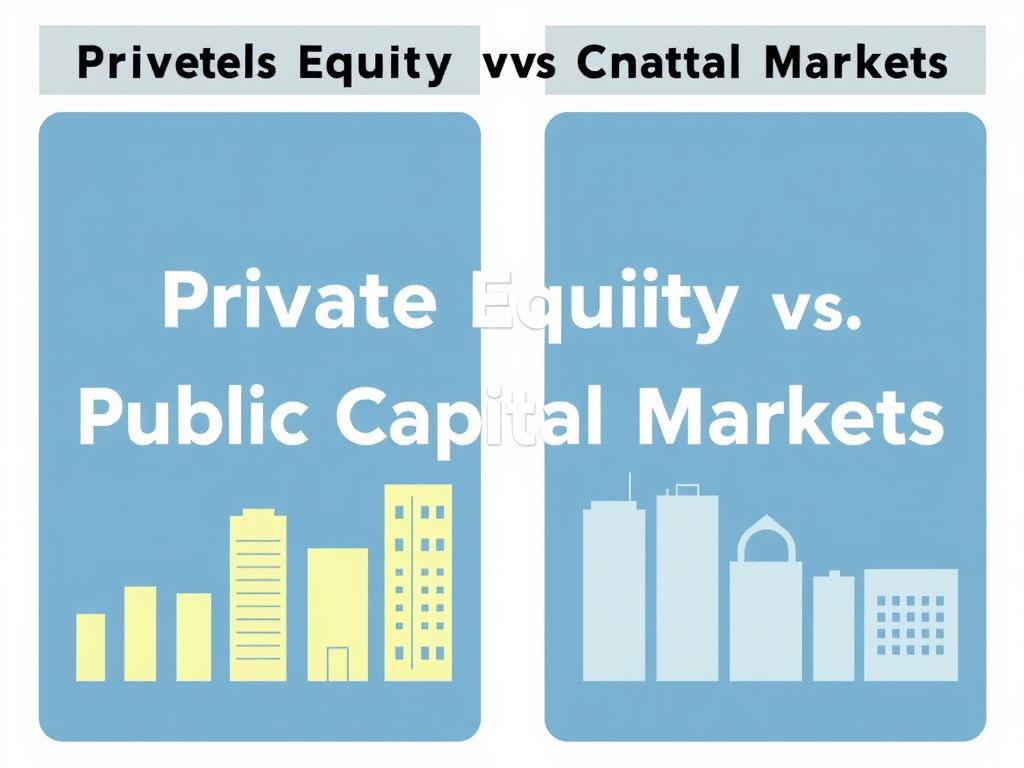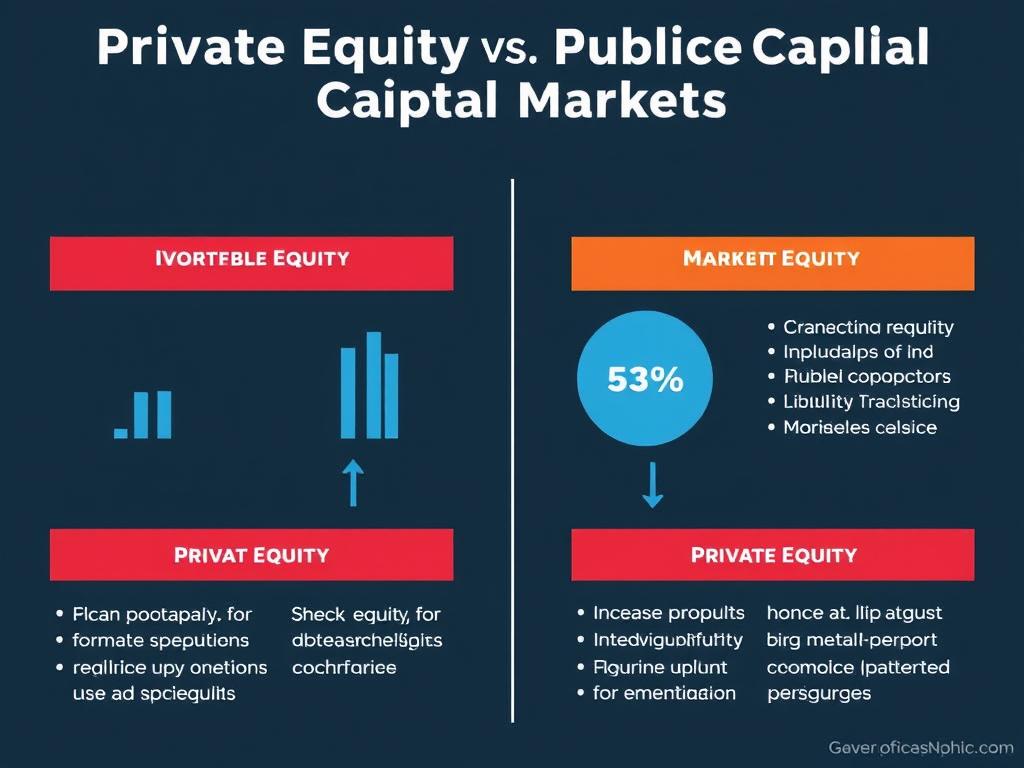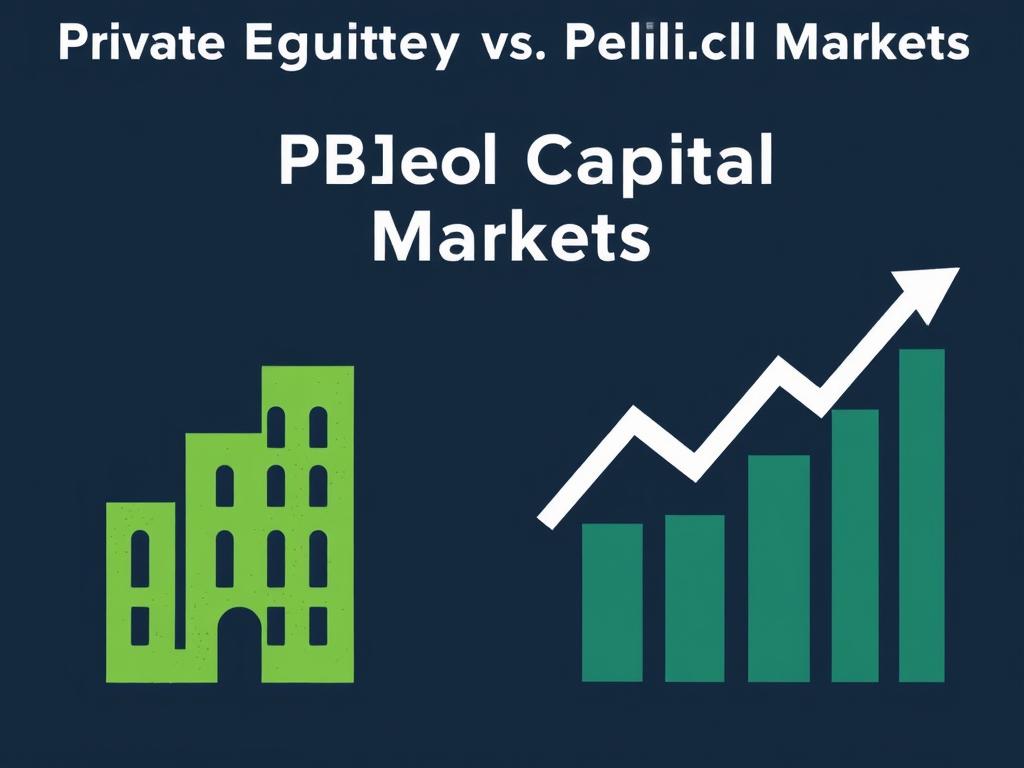Private Equity vs. Public Capital Markets: Understanding the Key Differences and Opportunities
Introduction to Private Equity and Public Capital Markets

When it comes to investing and raising capital, businesses and investors often find themselves deciding between private equity and public capital markets. While both play crucial roles in the financial ecosystem, they operate quite differently, offering distinct benefits and challenges. Understanding these differences is key for entrepreneurs, institutional investors, and even individual investors who want to make informed decisions about where to allocate resources. In this article, we will explore what private equity and public capital markets are, how they function, and why choosing one over the other can shape a company’s future.
What is Private Equity?

Private equity refers to investments made directly into private companies or buyouts of public companies that result in their delisting from public stock exchanges. Unlike public capital markets, private equity does not involve publicly traded shares. Typically, private equity investors include institutional investors, such as pension funds, insurance companies, and wealthy individuals, who pool their money to invest in private companies with the goal of improving operational efficiency and profitability over several years before exiting.
Characteristics of Private Equity

Private equity investments usually revolve around acquiring significant stakes or full ownership of companies, often for a period ranging from five to ten years. Investors work closely with company management to drive growth, restructure operations, or reposition the business for future success. Unlike public capital markets where stock price volatility is a daily event, private equity’s less liquid nature often means investors are in it for the long haul. This longer investment horizon allows more hands-on involvement and strategic planning.
- Long-term investments (5-10 years)
- Active management and operational involvement
- Illiquid investments—shares cannot be easily sold
- High potential returns paired with higher risk
- Focused on private companies or delisted public companies
What Are Public Capital Markets?
Public capital markets, on the other hand, involve the buying and selling of securities—most commonly stocks and bonds—on regulated exchanges like the New York Stock Exchange or Nasdaq. These markets provide companies with access to a broad pool of investors, enabling them to raise funds by issuing shares to the public. For investors, public markets offer liquidity, the ability to buy and sell shares quickly, and transparency due to regulatory disclosure requirements.
Characteristics of Public Capital Markets
Companies listed on public capital markets must comply with strict regulatory frameworks, including comprehensive reporting and disclosure obligations. These markets are highly liquid, allowing investors to trade shares often several times during a single trading session. This liquidity attracts a wide variety of investors, from retail to institutional, and tends to result in more efficient price discovery. However, the public spotlight means company management faces continuous scrutiny, and business decisions might be influenced by short-term market expectations.
- High liquidity and ease of trading
- Broad investor base, including retail and institutional
- Strict regulatory and disclosure requirements
- Subject to market volatility and short-term investor sentiment
- Companies can raise large amounts of capital quickly
Comparing the Advantages and Disadvantages
Understanding the trade-offs between private equity and public capital markets can help companies decide how to raise capital, and guide investors in selecting appropriate investment vehicles. Below is a detailed comparison:
| Aspect | Private Equity | Public Capital Markets |
|---|---|---|
| Ownership | Typically private; fewer owners; hands-on control | Widely dispersed ownership; passive investors |
| Liquidity | Low; investments often locked in for years | High; shares traded daily on exchanges |
| Regulation & Transparency | Less regulated; lower public disclosure | Highly regulated; frequent public disclosures |
| Investor Involvement | Active involvement in management and strategy | Limited involvement; mainly voting rights |
| Return Profile | Potentially higher returns due to operational improvements | Returns tied to market performance and dividends |
| Risk | Higher risk due to illiquidity and company-specific issues | Market volatility but generally lower company-specific risk |
Who Benefits the Most from Private Equity?
Private equity is particularly attractive for companies seeking strategic growth or undergoing major transformations. Startups or underperforming businesses can benefit from the expertise and capital injection brought by private equity investors. Moreover, entrepreneurs who prefer to avoid the scrutiny and pressures of quarterly earnings reports often find private equity financing more aligned with their long-term visions. For investors, private equity offers the chance to participate in unique growth opportunities not available on public markets.
Advantages of Accessing Public Capital Markets
Public capital markets are ideal for companies that have reached a stage where they seek broader capital access and liquidity for their shareholders. Going public can dramatically increase a company’s visibility, enhance credibility, and provide currency (shares) for acquisitions. Investors appreciate the ability to enter and exit positions quickly and benefit from dividends and capital appreciation. Additionally, diversified investors with varying risk appetites can participate, supporting a vibrant marketplace.
Private Equity vs. Public Capital Markets: Key Considerations
When choosing between private equity and public capital markets, businesses and investors should consider the following factors:
- Time Horizon: Private equity favors longer-term strategies, while public markets often require short-term results.
- Control: Private equity investors usually negotiate for greater influence over management decisions.
- Liquidity Needs: If access to capital or cashing out quickly is important, public markets offer more flexibility.
- Costs and Compliance: Preparing for and maintaining a public listing can be expensive and time-consuming.
- Market Conditions: Public markets are more vulnerable to external economic shocks affecting valuations.
Emerging Trends and the Future Landscape
Interestingly, the lines between private equity and public capital markets continue to blur. With the rise of special purpose acquisition companies (SPACs), direct listings, and more frequent large funding rounds in private markets, companies can choose hybrid approaches to fundraising. Moreover, private equity firms sometimes access public capital markets by listing their funds or using publicly traded vehicles, reflecting growing sophistication in the industry.
Investors also increasingly recognize the value of diversification across both private equity and public market portfolios. This combined approach aims to balance liquidity, risk, and return potential, capturing the best of both worlds. The evolving regulatory environment and technological advances such as blockchain fundraising platforms might further influence how capital is raised in the future.
Conclusion
In the ongoing debate of private equity versus public capital markets, neither is inherently better—it depends on the specific needs, goals, and circumstances of the company or investor involved. Private equity offers focused, long-term partnership opportunities with potential for high returns but comes with illiquidity and elevated risk. Public capital markets provide liquidity, transparency, and broad access but can be vulnerable to short-term market pressures. Understanding these distinctions empowers stakeholders to make strategic choices that align with their vision, risk tolerance, and growth ambitions. Ultimately, blending insights from both sides can lead to a more balanced and dynamic financial strategy.







